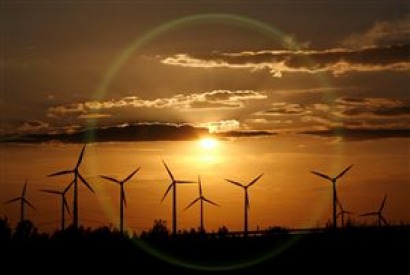
Last week I spent a few days in glorious Cape Town and met some of the key players in the emerging South African wind energy market where things are set to take of rapidly in the coming months.
Last Monday developers made their bids into the ‘second window’ to win PPAs from Eskom, the government-led power utility, for wind and solar projects in the country. It is expected that 1850MW of PPAs will be allocated in projects no bigger than 140MW and it will take three windows to allocate the full amount in this round.
The bid process is costly and demanding with a requirement for 30% local content in this window and the feeling in the market is that this will rise to closer to 60% in future windows.
Great news for job creation in the country as those wishing to play a role in the expanding industry will need to be on the ground and creating wealth. With foreign ownership of any project also limited to no more than 60% the government really are safe guarding the natural resources. It seems they have learnt lessons from the mistakes of others (UK).
So, we will see a huge expansion in wind and solar deployment, manufacturing supply chains, local jobs and wealth creation…well, maybe.
Another fascinating element of this market is the Broad Based Black Economic Empowerment (BE) policy of the ANC government, where positive discrimination is designed to empower those previously marginalised. In the recent window 2 bids the weighting for assessment of the bids is proposed to be 70% technical and price and 30% based on the bid’s BE score. The BE scores of all the parties involved is measured and assessed.
The merits of such a system are many and very admirable. However, in the context of a country that currently has 8 operating wind turbines and wants to have approximately 800 in four years’ time, these policies could be the stumbling block that derails the industry; unless companies are willing to use strategic training and development programmes to use these policies to their advantage.
The wind industry is often assumed to be a benevolent sector fighting climate change for the good of humanity, whereas often in reality it’s just another capitalist juggernaut hooked on money. South Africa and it’s government’s savvy policies are opening the door for companies that want to do good and play by the rules to make a real impact on climate change, wealth distribution and poverty relief.
Doing this will hit margins and will be much more hard work than parachuting personnel in from HQ on a temporary basis, but, it seems, the government is sending out a clear message the wind industry that those who think they prosper short term and run off with the loot and leave no legacy will not prevail.
Companies will be forced to invest in talent management and people development and hire in specialist skills in a strategic manner; it will be fascinating to be a part of this evolution.

